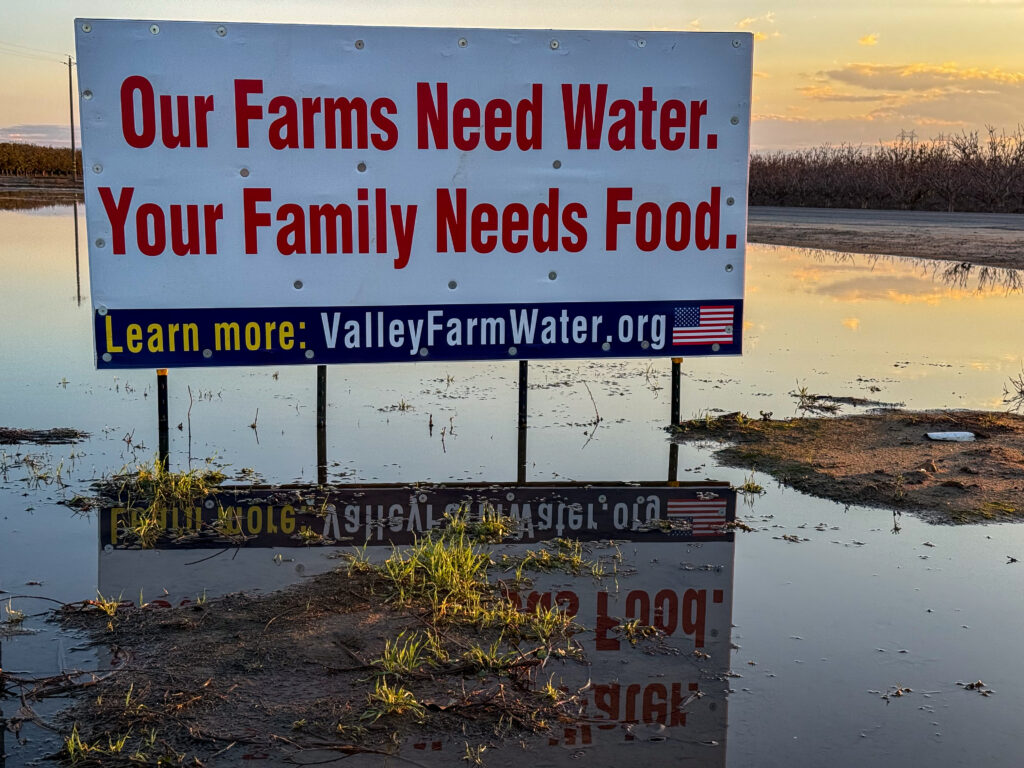Allowing that one person’s misconception is another’s gospel truth, I still have the impulse to correct others when I hear them say something that I know or believe to be, well, wrong. So here’s something from the current battle over California water that always makes me want to say, “Hey, wait a minute.”
San Joaquin Valley water interests and their allies, including members of Congress, want more water than they’ve gotten the last few years. Their biggest problem is that nature has not cooperated. The previous three winters were drier than normal, and the amount of rain and snow that fell on the state’s watersheds were far below normal. That circumstance happened to coincide with Endangered Species Act litigation that has led, for the time being at least, to limits on the amount of water the state and federal water projects are allowed to pump from the Delta to the San Joaquin Valley and Southern California. Those limits, set by federal wildlife agencies and designed to protect the Delta smelt and runs of chinook salmon, have led the aforementioned water interests to scream that the Delta pumps have been shut down, that farmers are being wiped out and valley communities sacrificed for a few lousy fish.
Now, whatever you happen to think of the last part of that formulation–that those who are trying to figure out how to save the fish want to see the San Joaquin Valley “dry up and blow away” (as Rep. Jim Costa, a valley Democrat, put it)–you shouldn’t have to think much about the first part, that the pumps have been shut down. That’s because it’s not true. The pumps are running, day in and day out. The major destination for a lot of that water is the San Luis Reservoir, a key storehouse for valley water, and it’s filling up.
But despite all the readily available data on Delta water shipments, the untruth that the pumps have been switched off is too good a propaganda point for some people to pass up. Rep. Devin Nunes, who represents much of Fresno and Tulare counties in Congress, says about water resources policy: “Its [sic] Simple: Turn on the Pumps.” Since last session, he’s been pushing a bill called the “Turn on the Pumps Act.” (The bill is, in fact, very simple: “In connection with the operations of the Central Valley Project, neither the Bureau of Reclamation nor any agency of the State of California operating a water project in coordination of the Central Valley Project shall restrict operation of their projects pursuant to any biological opinion issued under the Endangered Species Act of 1973, if such restrictions would result in levels of export less than the historical maximum levels of export” (italics mine).
Got that? No limits on pumping to protect endangered species, period, unless the limit results in as much or more water being pumped out of the Delta than the projects have ever pumped.
Rep. Tom McClintock, a Southern California Republican who relocated to and won the northeastern California congressional seat in 2008, is also a source of unrelenting “turn on the pumps” rhetoric. Earlier this month, he issued a broadside against Democrats in the House Water and Power Subcommittee for blocking consideration of Rep. Nunes’s excellent bill. “For the sake of humanity, Madam Chairwoman and my Democratic colleagues, turn on these pumps.” You have to admire the way these folks keep their rhetoric on a short leash.
If I were in Congress myself, I’d rise to tell my good friends and respected colleagues, “I have good news. The pumps are on! Even as I speak, rain is sweeping over your districts and on your thirsty constituents, helping fill the reservoirs not just with water, but with hope. And in that spirit of optimism, here’s a nonpartisan, nonsectarian suggestion: Pray for more rain. I am. That way, the reservoirs will keep rising, agriculture will get its water, and maybe there will be some left over for smelt and salmon and the thousands of people who depend on them. And maybe we won’t have to hear you shriek ‘Turn on the pumps!’ again.”
Like this:
Like Loading...


